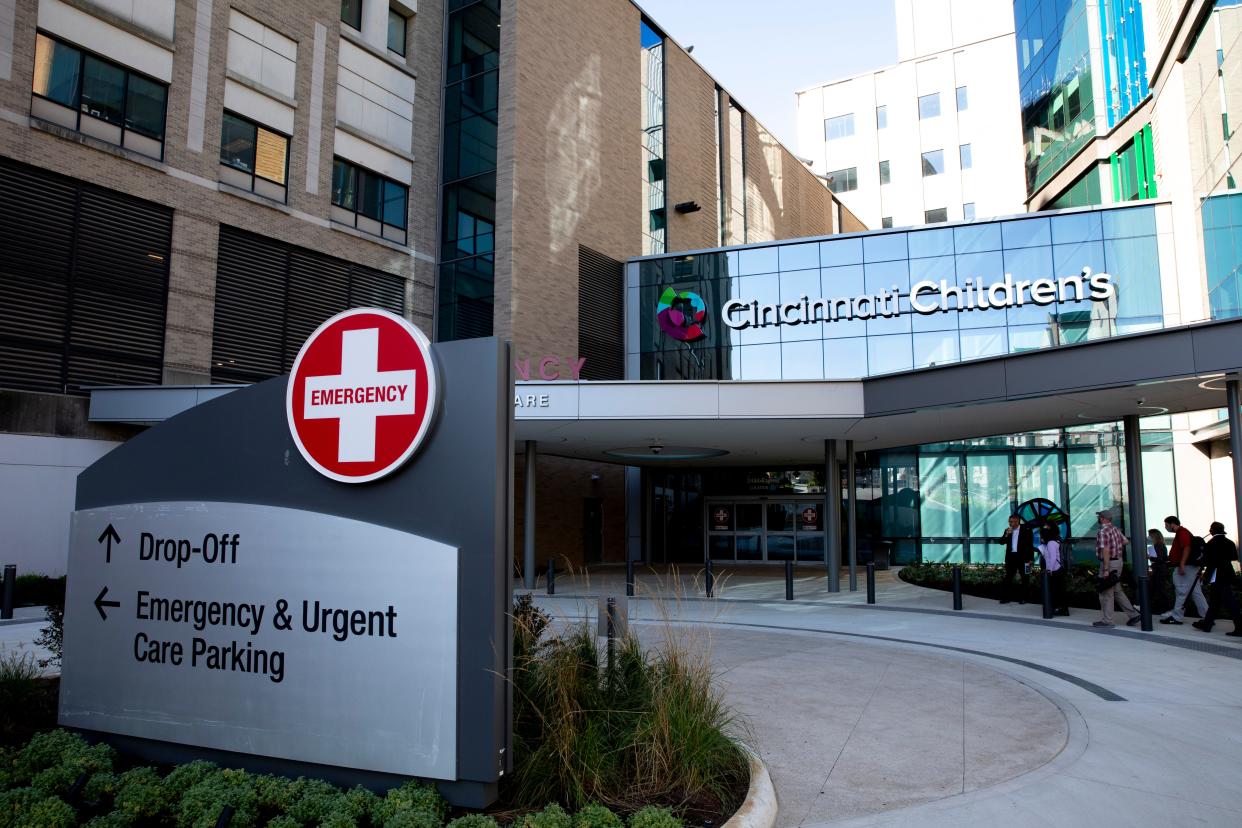Surge in respiratory virus jams up Cincinnati Children's ERs, urgent cares

A jump in a respiratory virus that can threaten the lives of babies and young children is prompting long waits at Cincinnati Children’s Hospital Medical Center’s emergency departments and urgent cares.
Healthcare providers in several states have recently reported a rise in cases of respiratory syncytial virus, known commonly as RSV. On Thursday, Ohio's director of health, Dr. Bruce Vanderhoff sounded the alarm on the recent development during a COVID-19 update in Columbus.
"I think that the medical community, broadly, is very concerned," Vanderhoff said. "Looking at the experience that the southern half of the globe had, remember their seasons are opposite to ours, they just came out of their fall, winter time period, which is the peak of respiratory season. And they had a very severe respiratory season."
Children's hospitals in Cleveland and Columbus are also experiencing unusual levels of RSV hospitalizations, and hospitals in at least 26 states have reported unprecedented rises. The uptick has some hospitals concerned about capacity as lingering effects of the COVID-19 pandemic continue, and hospitalizations due to virus infections remain.
More:RSV vaccine during pregnancy could prevent life-threatening respiratory virus in infants
COVID calm:COVID-19 community levels low in all 16 counties of the Cincinnati region
More:RSV, flu and the common cold: Kids sick with winter viruses are filling up hospitals
“I’ve been doing this a long time. I’ve been at Connecticut Children’s for 25 years, and I’ve never seen this level of surge specifically for RSV coming into our hospital,” Dr. Juan Salazar, executive vice president of Connecticut Children's Hospital, told CNN.
The concern about capacity, specifically in children's hospitals, however also relates to the specialized makeup they generally have, said Dr. Stephen Feagins, chief clinical officer of Mercy Health, who also serves as the medical director for Hamilton County Public Health.
"You really don't have a very large general inpatient presence because you don't have very many inpatient, otherwise healthy pediatrics," Feagins said. "So it doesn't take that much to cause that to be maxed out."
Feagins said the rise in cases as winter approaches has a strong correlation to how unique a lifestyle the COVID-19 pandemic has left people in.
"It's an indicator of the fact that we've had an unusual two and a half years," he said. "We sort of have this lack of immunity that we might otherwise have."
RSV is a common respiratory disease that typically occurs during respiratory and flu seasons associated with colder months. When infants and young children get the virus, their airways may become inflamed, and mucus and infection-fighting cells can build up. That can make it very hard to breathe.
According to the U.S. Centers for Disease Control and Prevention, 24 out of 100 babies and children will develop bronchiolitis or pneumonia following exposure to the virus, but just about five to 20 out of 1,000 will need hospitalization.
"In certain kids, it can cause severe breathing issues, especially if they have underlying conditions," said Dr. Stephen Gordon, an infectious disease specialist at the Cleveland Clinic.
Cincinnati Children's offered these suggestions about when parents should take children to the emergency department or call 911:
When they’re breathing rapidly with sinking in between the ribs.
They’re having episodes of apnea (stops breathing for a period of time).
They’re having episodes of turning blue.
And because longer wait times are occurring in emergency rooms and urgent cares, the hospital recommends only bringing emergency cases to those wait rooms.
“If your child doesn’t need emergency care, please call your primary doctor,” Cincinnati Children's said in a statement Friday morning. "If they’re unavailable you can visit our 24/7 Virtual Urgent Care.”
While nearly all children will be infected with RSV in some capacity by the time they turn two, the virus can cause serious illness or even death to vulnerable individuals, including the very young and the elderly. The virus causes an estimated 58,000 hospitalizations annually among children under five, according to the National Institute of Allergy and Infectious Disease. There are around 14,000 deaths each year among adults aged 65 and older in the U.S, the agency also reports.
This article originally appeared on Cincinnati Enquirer: Respiratory virus causes longer wait times at Cincinnati Children's

